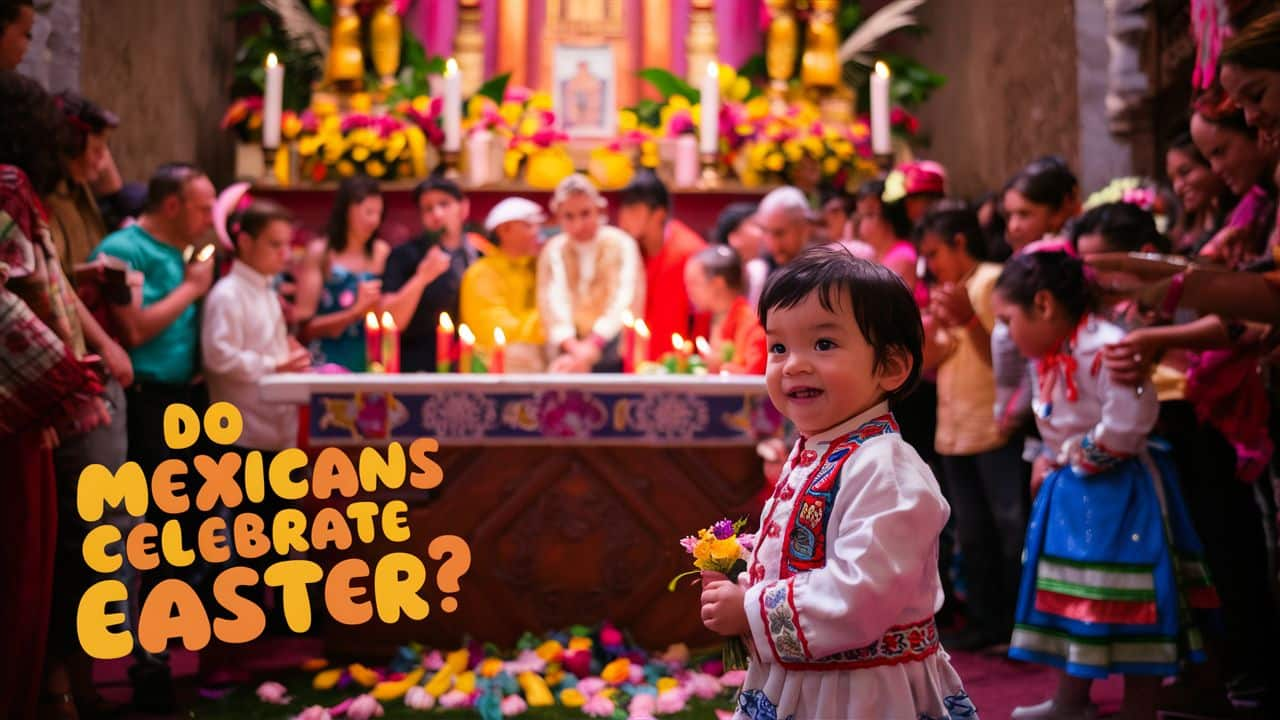In the vibrant and rich tapestry of Mexican culture, traditions intertwine with religious fervour to create a rich mosaic of celebrations throughout the year. Among these cherished observances is Easter, known as “Semana Santa” in Mexico. While Easter holds significant religious importance worldwide, Mexicans infuse their own unique customs, blending ancient indigenous rituals with Catholic traditions brought by Spanish colonisers. From solemn processions to lively fiestas, the celebration of Easter in Mexico is a captivating fusion of faith, community, and cultural heritage. In this blog post, we delve into the colorful tapestry of Easter festivities in Mexico, exploring the customs, beliefs, and vibrant celebrations that mark this joyous season in the country’s calendar.
How Easter is Celebrated in Mexico
Easter, widely known as Pascua or Semana Santa (Holy Week) in Mexico, is one of the most important religious holidays in the country. As a predominantly Catholic nation, Mexico celebrates Easter with a unique blend of cultural traditions and religious rituals that reflect the country’s rich history and heritage. And yes, Mexican people celebrate easter with utmost zing!
Holy Week Observances
The Easter celebrations in Mexico begin on Palm Sunday, also known as Domingo de Ramos. On this day, people carry intricately woven palm fronds to church, where they are blessed and used in processions that reenact Jesus’ entry into Jerusalem.
The most solemn days of Holy Week are Maundy Thursday, Good Friday, and Holy Saturday. These days are marked by special religious services, processions, and reenactments of the Passion of Christ.
One of the most striking and visually stunning traditions during Holy Week is the “Burning of the Judases.” On the night of Holy Saturday, neighborhoods and towns burn elaborate papier-mâché effigies of Judas Iscariot, the disciple who betrayed Jesus. These effigies are often filled with firecrackers, creating a dramatic and explosive display as a symbol of triumph over evil.
Easter Sunday Celebrations
Easter Sunday, known as Domingo de Pascua, is a joyous occasion celebrated with grand processions, colorful festivals, and lively gatherings. In many parts of Mexico, the day begins with the “Burning of the Judas” ritual, followed by church services and family gatherings.
One of the most iconic Easter traditions in Mexico is the “Burning of the Judas” ritual, which takes place on Easter Sunday morning. After church services, people gather to watch as large papier-mâché effigies of Judas Iscariot, often filled with firecrackers and painted in bright colors, are hung and set on fire. This symbolic act represents the triumph of good over evil and the destruction of Judas’ betrayal.
Family gatherings and feasting are an integral part of Easter celebrations in Mexico. Traditional Easter dishes include capirotada (a bread pudding made with cheese, nuts, and syrup), bacalao (salted cod), and various types of tamales. Easter eggs are also a common sight, with families decorating and dyeing eggs together.
Cultural Festivities
In addition to religious observances, many regions of Mexico host vibrant cultural festivals and events during the Easter season. These celebrations often incorporate elements of pre-Hispanic traditions, blending indigenous and Catholic practices.
One of the most famous Easter festivals in Mexico is the Passion Play of Iztapalapa, held in Mexico City. This elaborate reenactment of the Passion of Christ involves hundreds of actors, elaborate costumes, and stunning sets, attracting visitors from all over the world.
In the coastal town of Taxco, the Festival of the Burning of the Jews takes place during Holy Week. This controversial tradition involves burning effigies of Jewish figures, a practice rooted in historical anti-Semitism but now viewed by some as a cultural heritage event.
Indigenous Traditions
In many indigenous communities, Easter celebrations incorporate ancient rituals and customs that pre-date the arrival of Catholicism. For example, in the Maya regions of Chiapas and Yucatán, the Lenten season is marked by ceremonial dances, rituals to honor the Earth, and the consumption of traditional dishes made from corn and other indigenous ingredients.
One particularly unique tradition is the “Voladores” (Flying Men) ritual, performed in various parts of Mexico, including Papantla, Veracruz. In this ancient ritual, five men climb to the top of a tall pole and tie themselves to ropes that are attached to a rotating platform at the top. As they descend, they circle the pole in a choreographed dance, representing the descent of the gods from the heavens.
Conclusion
The Easter celebrations in Mexico are a rich tapestry of religious devotion, cultural traditions, and indigenous practices. From the solemn processions and reenactments of Holy Week to the joyous festivities and family gatherings on Easter Sunday, Mexicans celebrate this important holiday with a unique blend of Catholic and pre-Hispanic rituals. Whether it’s the “Burning of the Judases,” the vibrant Passion Plays, or the ancient indigenous ceremonies, the Easter season in Mexico is a truly captivating experience that showcases the country’s diverse cultural heritage.

